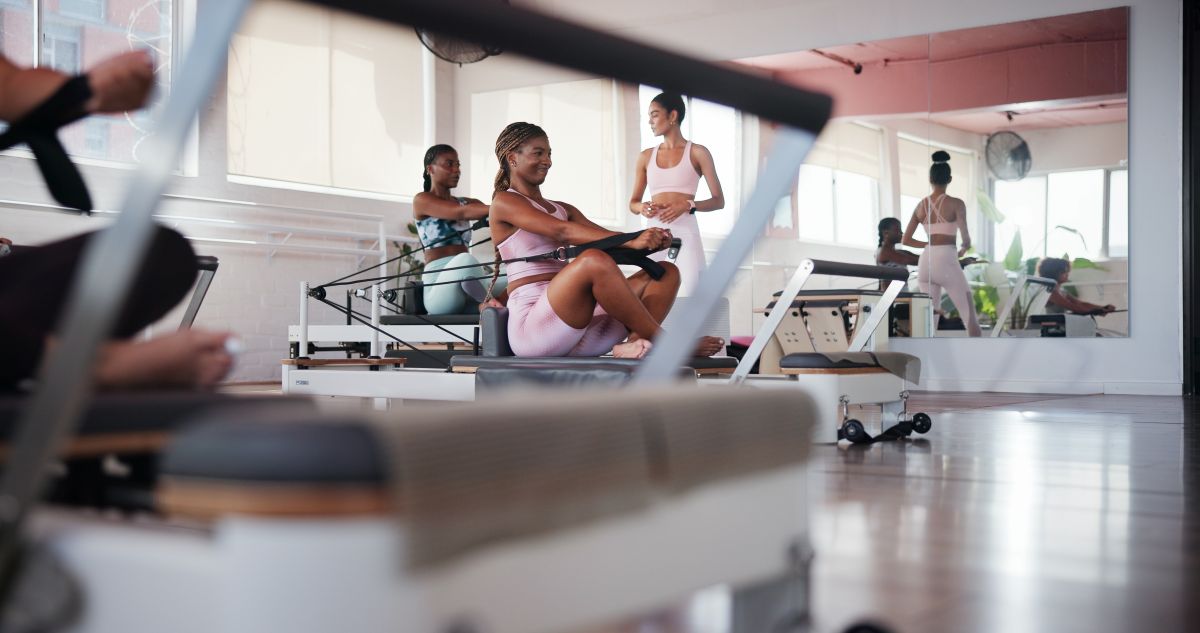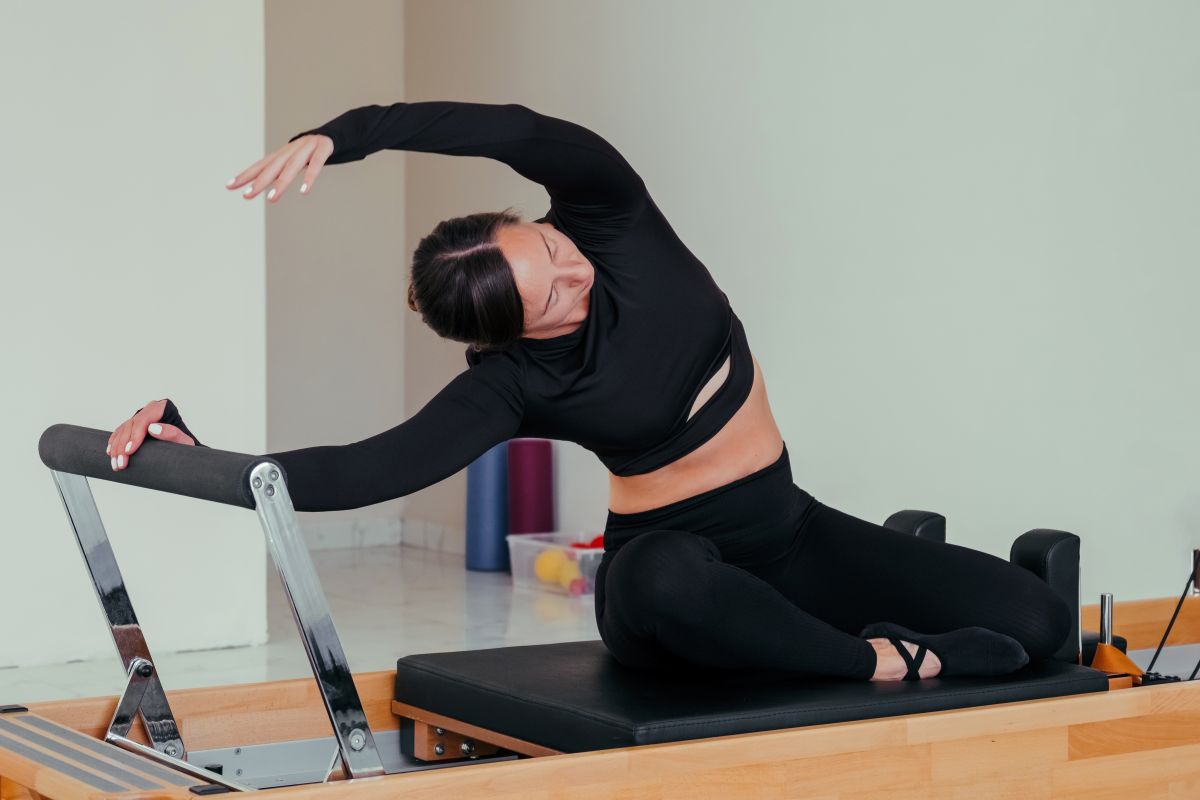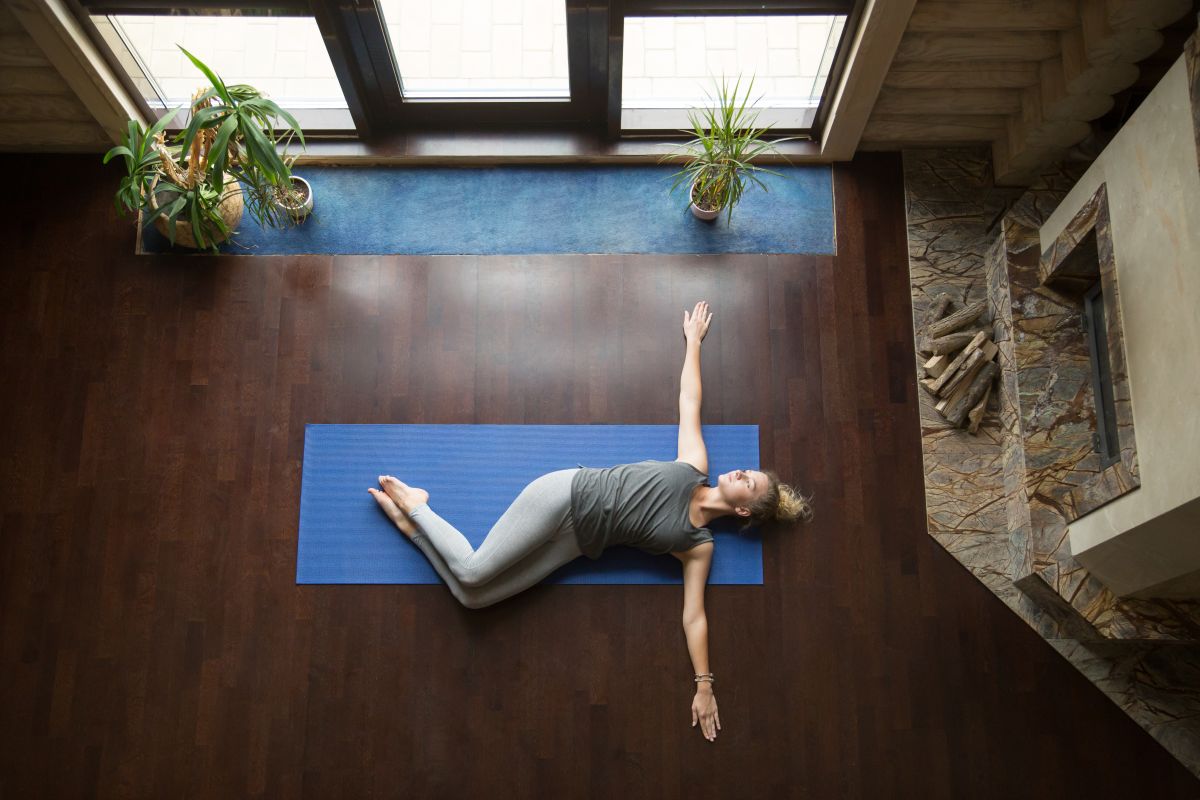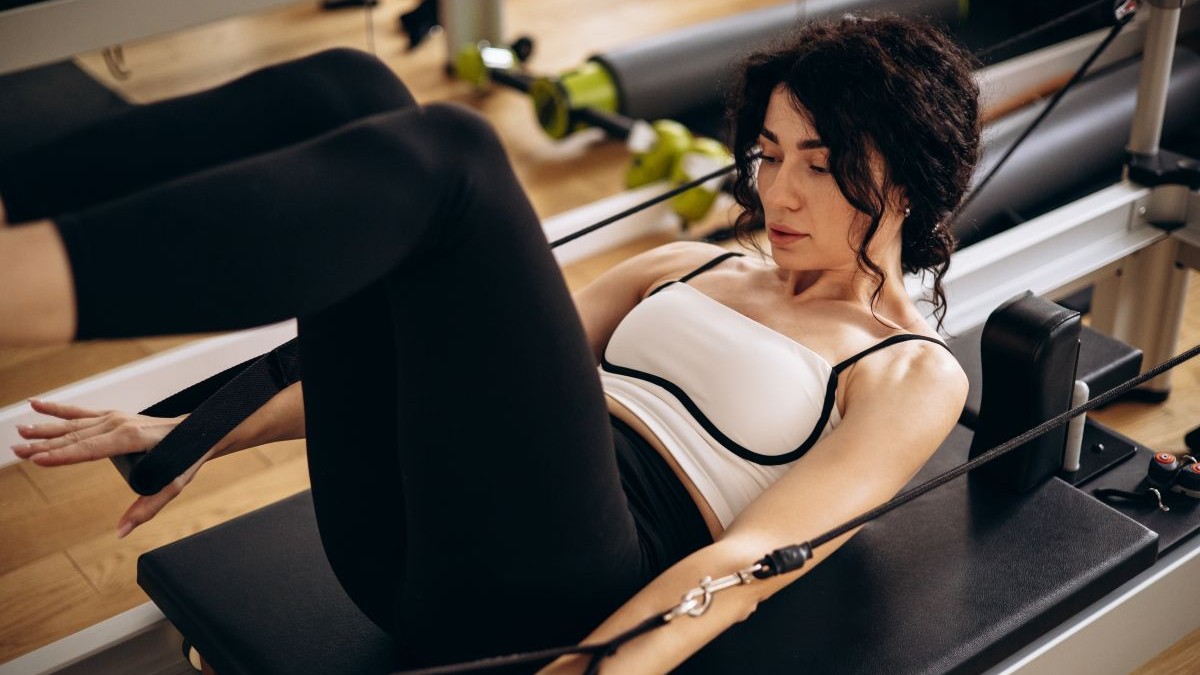Beauty and wellness professionals spend hours on their feet, often hunched over treatment beds or in awkward positions that can take a serious toll on the body.
Reformer Pilates is gaining a reputation as a powerful tool to counteract that strain – improving posture, building strength and offering a moment of mindful reset.
What is reformer Pilates and why is it so popular right now?
Reformer Pilates is a form of Pilates performed on a machine called a reformer, which uses springs, pulleys and a sliding carriage to provide resistance and support – offering a greater range of motion, deeper core engagement and more dynamic strength training than traditional mat Pilates.
This low-impact, high-benefit form of exercise strengthens the body from the inside out, supporting posture, improving mobility and restoring physical and mental balance.
With many beauty therapists experiencing aches, postural issues and burnout, reformer Pilates has the potential to become the go-to solution for professionals who want to take better care of their bodies while performing at their best.
Why reformer Pilates is ideal for beauty and spa therapists
Beauty therapists and spa professionals spend long hours in static or awkward positions – whether that's leaning over treatment beds, standing all day or crouching during massages.
As Sophie Nunn, founder of award-winning The Pilates Lab Studio in Epsom, Surrey, explains, "Reformer Pilates offers strength, mobility and postural benefits that are perfectly suited to the physical demands of beauty and wellness roles. It builds deep core strength, improves posture and helps balance the body."
She continues, "If you’ve spent all day leaning over, Pilates can help you open up through the chest and strengthen into the back of the body to help balance out the position your spine has been stuck in all day."
Fiona Kavanagh, personal trainer and group instructor operating as the London Fitness Coach, agrees: "If you think about the positions therapists are more than often working in, they often slouch forward in a hunched position.
"Makeup artists are also notorious for having neck issues... reformer Pilates is an absolute godsend."
Common injuries and postural problems among therapists
A 2022 study published in the International Journal of Therapeutic Massage and Bodywork found that 85% of massage therapists reported work-related pain, particularly in the lower back, neck, shoulders and wrists.
This matches the day-to-day challenges Nunn sees in some of her clients. She says, "The most common issues we see are lower back pain, tight hips, rounded shoulders and neck strain.
“Pilates helps by strengthening the back via your core and glutes, opening the chest and creating length and mobility through the spine."
Kavanagh adds, "As the posture becomes poor, the muscles become weak, so Pilates is a fantastic help to support posture, strengthen the core and strengthen joints like knees, hips and ankles."

How Pilates prevents injury and builds long-term resilience
In a profession where physical wear and tear is often inevitable, prevention is everything.
Reformer Pilates doesn’t just help in the moment, it also helps build long-term resilience.
"Reformer Pilates brings awareness to how you move and hold yourself," says Nunn. "We cue our exercises to help teach you what to be aware of when you’re out of the studio too.
“Our spine is supposed to move in multiple directions. In Pilates we work through all planes of movement which helps contribute towards improved posture in our day-to-day lives."
Kavanagh agrees that this mind-body awareness is essential for injury prevention: "Reformer Pilates is a fantastic way to support alignment, enhance posture and prevent injuries.
“By having a solid foundation with good range of motion through the body, you're much more likely to prevent injuries like lower back pain and neck strains."
Mental health and mindfulness benefits
Pilates isn’t just about physical alignment – it offers powerful mental wellbeing benefits too.
"Pilates is as much about the mind as the body," explains Nunn. "Breathwork and control within each movement help calm the nervous system, tune in with the body and create a sense of presence and mindfulness – in other words; meditation."
Kavanagh comments, "With a practice that has a huge emphasis on breath work, mind-muscle connection and the stretch element, I believe Pilates plays an integral role in supporting mental health, slowing the mind down, and having a real appreciation for what the body can do."
How to get started with reformer Pilates
If you’re new to reformer Pilates, it’s important to start slow and with proper guidance.
"It can seem so daunting but there are beginner-friendly classes at lots of studios," says Nunn. "I’d always recommend starting reformer classes with an in-person instructor over online classes."
Kavanagh agrees, noting, "I would absolutely insist on starting at a complete beginner level... If you’re in a position to have a private session, fantastic. If not, make sure you book into a beginner/foundation class."
How often should therapists practise Pilates?
"Two to three times per week is ideal to see noticeable changes in strength, posture, and energy levels," says Nunn.
"But even one session a week is valuable – consistency is more important than intensity."
Kavanagh echoes this, recommending "a good two to three sessions a week to keep you mobile, strong and help support your posture".

Simple at-home Pilates exercises for beauty therapists
Both instructors offer simple take-home moves to support posture and release tension.
Nunn recommends:
- Engaging your core when standing
To engage your core when standing, gently draw your belly button in toward your spine without holding your breath or tensing your shoulders.
Imagine zipping up from your pelvis to your ribs, creating light tension around your midsection, like a supportive corset. This activates the deep abdominal muscles that support your posture and spine throughout the day.
- Diaphragmatic breathing
Diaphragmatic breathing, or belly breathing, involves inhaling deeply through your nose so that your belly (not your chest) rises as your lungs fill with air.
Place one hand on your chest and one on your stomach: as you breathe in, only the hand on your stomach should lift.
Exhale slowly through your mouth, letting your belly gently fall. This type of breathing helps calm the nervous system and improves oxygen flow.
- Chest openers
Chest openers are simple stretches that counteract slouched posture by opening up the front of the body.
One easy version: stand tall, clasp your hands behind your back, and gently squeeze your shoulder blades together as you lift your chest and look slightly upward.
Hold for 20-30 seconds, breathing deeply, to release tension and improve upper body posture.
Kavanagh suggests:
- Spinal roll downs
To do a spinal roll down, stand tall with your feet hip-width apart and arms relaxed by your sides.
Slowly tuck your chin to your chest and begin to roll down through your spine one vertebra at a time, letting your arms hang toward the floor. Bend your knees slightly if needed.
Pause at the bottom, then slowly roll back up to standing, stacking each vertebra until your head is the last to lift. Move with control and breathe throughout.
- Cat/cow stretches
To perform cat/cow stretches, start on all fours with your hands under your shoulders and knees under your hips.
As you inhale, drop your belly, lift your chest and tailbone, and look slightly upward – this is the cow position.
As you exhale, round your spine upward, tuck your chin to your chest, and gently draw your belly in – this is the cat position.
Flow between the two slowly for several breaths to improve spinal mobility and release tension.
- Figure-of-four glute/hip stretches
To do a figure-of-four glute/hip stretch, lie on your back with both knees bent and feet flat on the floor. Cross your right ankle over your left thigh, creating a "figure four" shape.
Thread your hands through the gap and gently pull your left thigh toward your chest, keeping your head and shoulders relaxed. You should feel a deep stretch in your right glute and hip.
Hold for 20–30 seconds, then switch sides.
- Supine twists
To do a supine twist, lie on your back with your arms extended out to the sides in a T-shape.
Bend your knees and draw them toward your chest, then slowly lower both knees to one side while keeping your shoulders grounded.
Turn your head gently in the opposite direction for a deeper stretch. Hold for 20–30 seconds, then bring your knees back to center and repeat on the other side to release tension in the spine and lower back.

Is Pilates the future of spa wellness?
As demand grows for holistic, preventative health services, both instructors believe reformer Pilates has an exciting future in spas.
"I believe reformer Pilates will only become more integrated into holistic wellness offerings," says Nunn. "As the industry increasingly values preventative care, Pilates aligns perfectly.
“I see spas including movement rooms, reformer classes, or mini routines as part of treatment packages or staff care."
Kavanagh adds: "By rebranding pampering into preventative, this will be a huge opportunity to launch a new product and integrate holistic wellness."
Is reformer Pilates right for me?
Kavanagh says, "Go into your session with an open mind. Pilates is for everybody and every body.
“Going with a friend makes it less daunting. And do your research on the studio and instructor to find the right fit."
"Just start!" agrees Nunn. "You don’t need to be flexible, fit, or experienced. Pilates meets you where you are. It’s an investment in your body, your wellbeing, and yourself."
Whether you’re a therapist looking to ease the strain of long hours or a salon owner exploring staff wellbeing initiatives, reformer Pilates might just be the smart, sustainable secret weapon your body has been waiting for.
You might also like:




